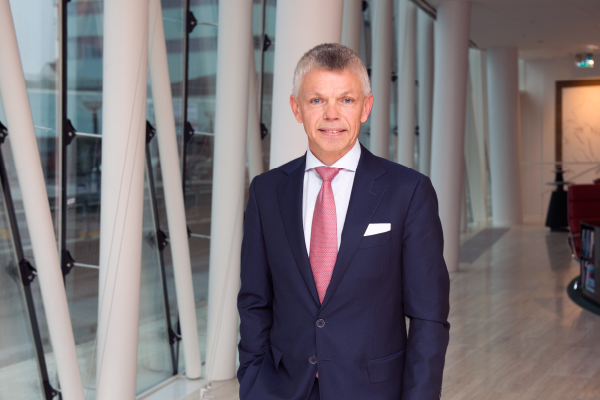Saxo Bank’s Group CFO Steen Blaafalk discusses the opportunities for foreign exchange trading in the Middle East and the power of technology platforms in the space.
How big is the retail forex market in the Middle East, and what are the trends shaping its growth?
The Middle East commands approximately eight percent of the retail forex market at an average daily traded value of $23 billion. Recent figures have also suggested there are in excess of 200,000 active traders in the Middle East and North Africa – a drastic increase from 20,000 a decade ago. We believe that number will only increase. We are witnessing a strong surge in demand both from existing traders looking for a more service-oriented platform and from new entrants keen to explore the forex trading environment.
Can you discuss the future of online trading in the region?
With increased access to information facilitating informed decisions, a growing number of investors in the region have turned to online trading in the hope of managing their investments by accessing trading opportunities across multiple asset classes. As such, Saxo Bank sees huge opportunities in the region and we have made a significant investment in not just acquiring clients, but also equipping them with the primary tools they need to invest – insights and technology.
How do you plan to build out your business in the digital age?
Technology is at the core of Saxo Bank’s operations. Innovation has been one of our cornerstones since we were founded in 1992 – in fact, you could say that we were a FinTech company before the term even entered the mainstream. We have consistently invested heavily in improvements to our trading platform. The result is intuitive, clean and user-friendly technology – with increasingly streamlined platforms offering the tools and functionality to give our clients the edge in the multi-asset investment space. That said, we are certainly not resting on our laurels. We want to shape the future, not follow it.
Our technology is not only changing how our retail clients trade, but also how our partners – other banks and brokers – improve their offering to their end clients. The sheer pace of technological change has made it impossible for many institutions to maintain an edge when it comes to innovation. The result is a paradigm shift from a business-to-customer economy to a so-called collaborative economy. As testament to this strategy, we launched SaxoTraderGO in May – our new multi-asset platform. The platform was built from the ground up with a focus on usability and performance, integrating seamlessly between desktop and mobile devices. The development of the platform reflects a key trend: 20 percent of the bank’s overall retail trading takes place through mobile devices. This adoption of technology and the increase in mobile business-to-customer interaction presents a huge growth opportunity for both Saxo Bank and its partners.
We are also improving access to trading opportunities across multiple asset classes; investors need to be able to trade in markets where there is volatility and to switch between asset classes with consummate ease. In light of this, it is also worth mentioning the depth of our offering. At present, we can provide clients with access to more than 30,000 financial products including FX (spot, forward and options), stocks, CFDs, commodities, futures, contract options and single stock options.
What should CFOs know about volatile foreign exchange rates and the risks involved?
Broadly speaking, we see volatility as the degree of unpredictable change over time of a certain currency pair exchange rate. Measuring and managing exchange rate risk exposure is therefore integral to CFOs seeking to reduce their firm’s vulnerability to major exchange rate fluctuations, which could, in turn, impact profit margins.
Corporations typically protect themselves from foreign exchange rate volatility through forwards, i.e. contracts that lock in the exchange rate for the purchasing or sale of a currency at a future date. In understanding both the positive and negative aspects of forwards, CFOs can decide whether and to what extent their companies should be using them before selecting a suitable hedging strategy for their organisation. For companies with multinational operations or supplier and customer relationships in multiple markets, currency hedging is an essential part of their treasury function.
What should they keep in mind while choosing an FX provider? Should they look beyond traditional hedging strategies?
Access to foreign exchange markets has transformed unrecognisably in recent years and the abundance of providers has resulted in a number of firms providing similar services but, sadly, there has been a lower barrier to entry meaning that not all firms adhere to the highest standards. Where CFOs should pay attention is in ascertaining whether a provider has robust risk mitigation practices and whether it can combine this with superior technology – something that we pride ourselves on. Investors increasingly demand usability, mobility, performance and service when executing trades. We meet these demands through state-of-the-art trading tools and features.
White label partnerships have become a cornerstone of our business – we offer banks a sophisticated and cost-effective way to replace outdated technology. There are now more than 120 active white label partners using our technology, including banks with cross-border activities.
The SaxoTreasurer platform allows corporate clients to hedge their commercial currency exposure at competitive prices. We continue to see a real opportunity in leveraging our heritage in technological innovation, our robust financial position and risk management credentials to become an essential facilitator in capital markets.





